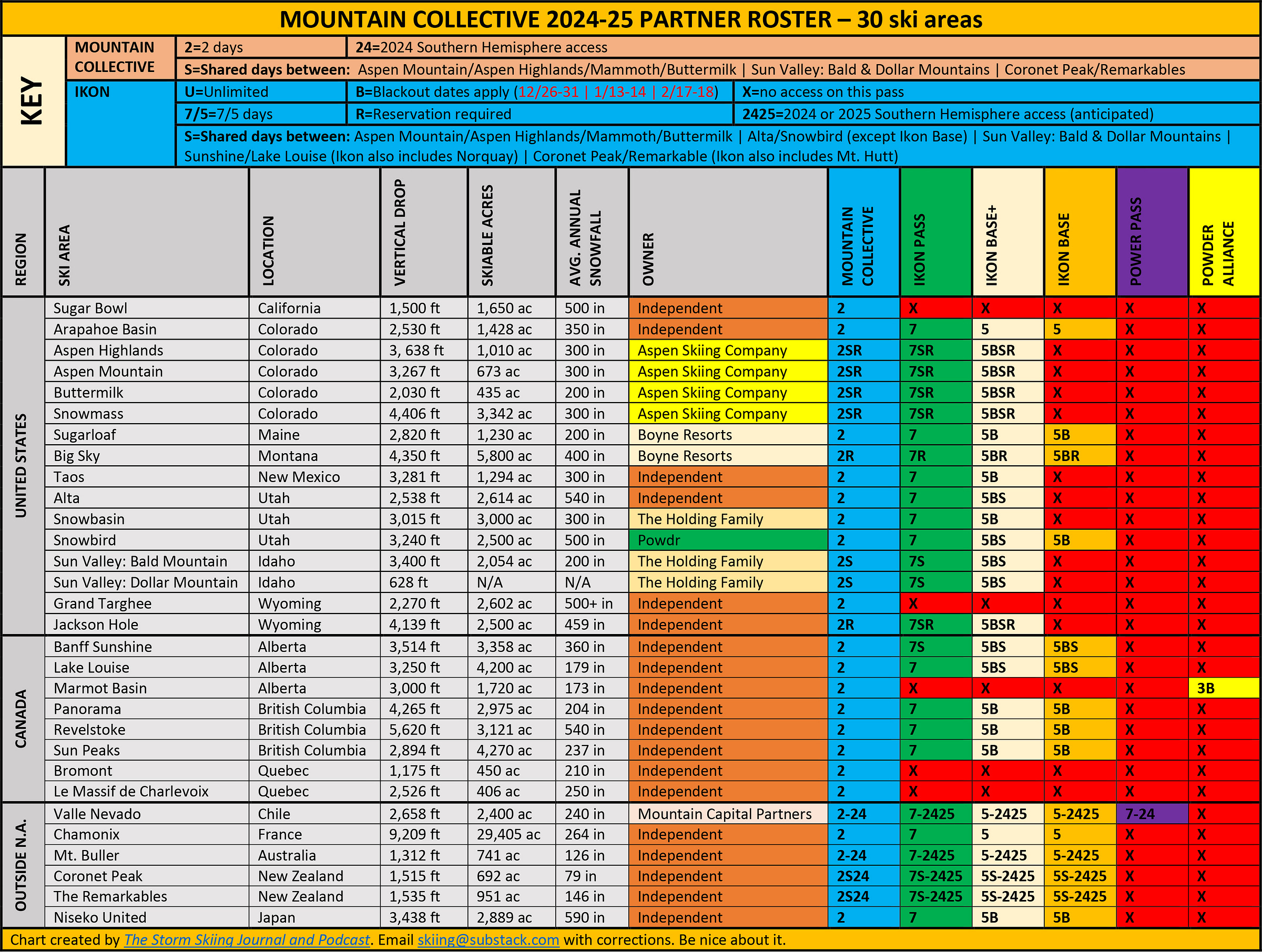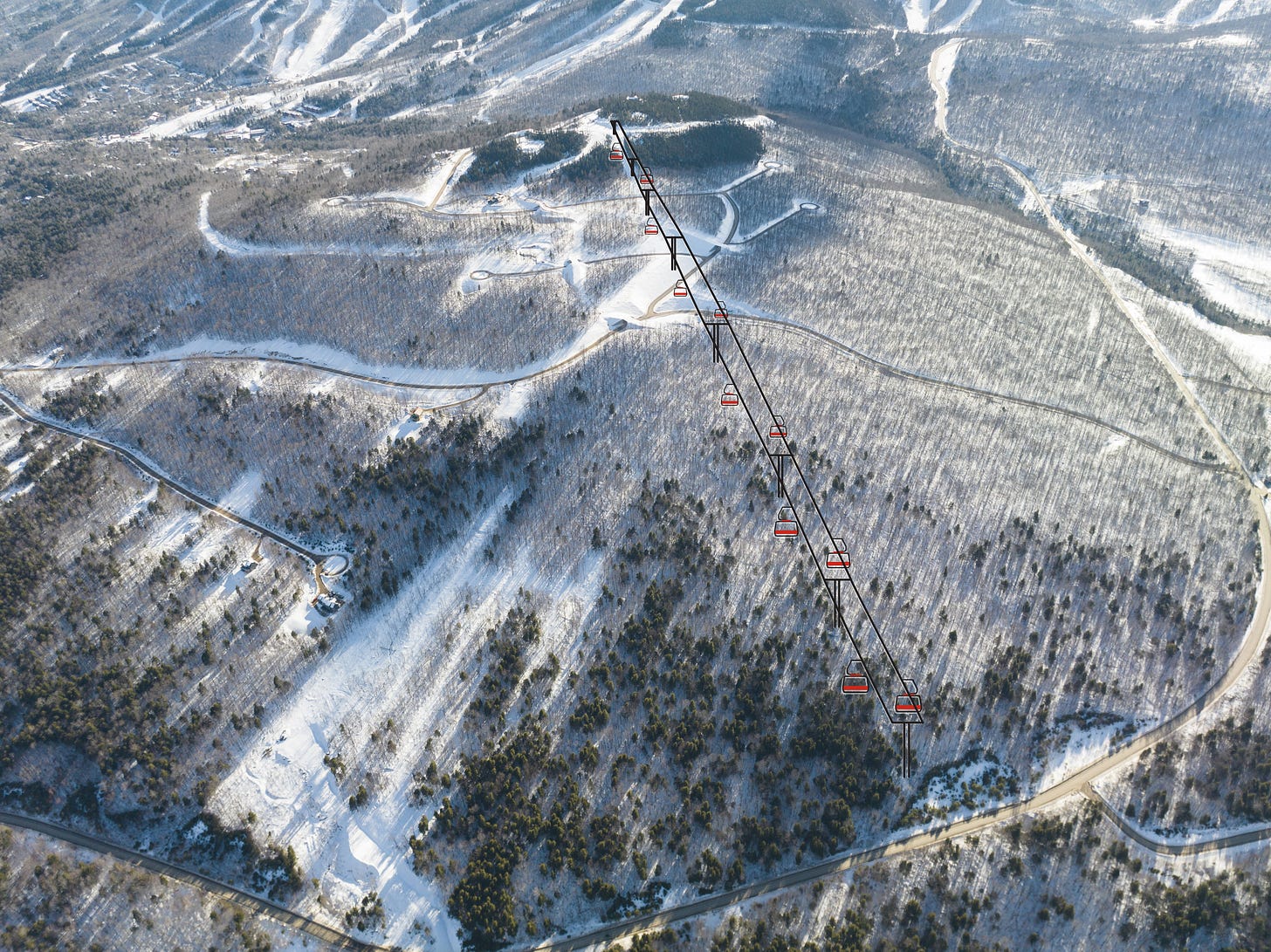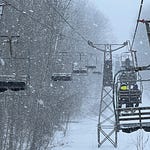Who
Brian Heon, General Manager of Sunday River, Maine
Recorded on
January 30, 2024
About Sunday River
Click here for a mountain stats overview
Owned by: Boyne Resorts
Located in: Newry, Maine
Year founded: 1959
Pass affiliations:
Ikon Pass: 7 days, no blackouts
Ikon Base Pass: 5 days, holiday blackouts
New England Pass: unlimited access on Gold tier
Reciprocal partners:
New England Pass holders get equal access to Sunday River, Sugarloaf, and Loon
New England Gold passholders get three days each at Boyne’s other seven ski areas: Pleasant Mountain, Maine; Boyne Mountain and The Highlands, Michigan; Big Sky, Montana; Brighton, Utah; Summit at Snoqualmie, Washington; and Cypress, B.C.
Closest neighboring ski areas: Mt. Abram (:17); Black Mountain of Maine (:34); Wildcat (:46); Titcomb (1:05); Attitash (1:05); Cranmore (1:11)
Base elevation: 800 feet
Summit elevation: 3,150 feet (at Oz Peak)
Vertical drop: 2,350 feet
Skiable Acres: 884 trail acres + 300 acres of glades
Average annual snowfall: 167 inches
Trail count: 139 (16% expert, 18% advanced, 36% intermediate, 30% beginner)
Lift count: 19 (1 eight-pack, 1 six-pack, 1 6/8-passenger chondola, 2 high-speed quads, 5 fixed-grip quads, 4 triples, 1 double, 1 T-bar, 3 carpets – Sunday River also built an additional triple chair on Merrill Hill, which is complete but not yet open; it is scheduled to open for the 2024-25 ski season – view Lift Blog’s inventory of Sunday River’s lift fleet.)
View historic Sunday River trailmaps on skimap.org.
Why I interviewed him
What an interesting time this is in the North American ski industry. It’s never been easier or cheaper for avid skiers to sample different mountains, across different regions, within the span of a single season. And, in spite of the sorry shape of the stoke-obsessed ski media, there has never been more raw information readily available about those ski areas, whether that’s Lift Blog’s exhaustive databases or OpenSnow’s snowfall comparisons and histories.
What that gives all of us is perspective and context. When I learned to ski in the ‘90s, pre-commercial internet, you could scarcely find a trailmap without visiting a resort’s ticket window. Skimap.org now houses more than 10,000 historic trailmaps for North America alone. That means you can understand, without visiting, what a ski area was, how it’s evolved, and how it compares to its neighbors.
That makes Sunday River’s story both easier and harder to tell. Easier because anyone can now see how this monster, seated up there beyond the Ski 93 and North Conway corridors, is worth the drive past all of that to get to this. The ski area is more than twice the size of anything in New Hampshire. But the magical internet can also show skiers just how much snowier it is in Vermont, how much emptier it is at Saddleback, and that my gosh actually it doesn’t take so much longer to just fly to Utah.
Sunday River, self-aware of its place in the ski ecosystem, has responded by building a better mountain. Boyne has, so far, under-promised and over-delivered on the resort’s 2030 plan, which, when launched four years ago, didn’t mention either of the two D-Line megalifts that now anchor both ends of the resort. The snowmaking is getting better, even as the mountain grows larger and more complex. The teased Western Reserve expansion would, given Sunday River’s reliance on snowmaking, be truly audacious, transforming an already huge ski area into a gigantic one.
Cynics will see echoes of ASC’s largess, of the expansion frenzy of the 1990s that ended in the company’s (though fortunately not the individual ski areas’) extinction. But Boyne Resorts is not some upstart. The narrative of ski-consolidation-doesn’t-work always overlooks this Michigan-based company, founded by a scrappy fellow named Everett Kircher in 1947 – nearly 80 years ago. Boyne officials assure me that their portfolio-wide infrastructure investment is both considered and sustainable. If you’ve been to Big Sky in the past couple of years, it’s clear what the company is trying to achieve, even if they won’t explicitly say it (and I’ve tried to get them to say it): Boyne Resorts is resetting the standard for the North American ski experience by building the most modern ski resorts on the continent. They’re doing what I wish Vail, which continues to disappoint me in the Midwest and Mid-Atlantic, would do: ensuring that, wherever they operate, they are delivering the best possible version of skiing in that region. And while that’s a tough draw in the Cottonwoods (with Brighton, stacked, as it is, against the Narnia known as Alta-Snowbird), they’re doing it in Michigan, they’re doing it in the Rockies (at Big Sky), and they’re doing it in New England, where Loon and Sunday River, especially, are transforming at superspeed.
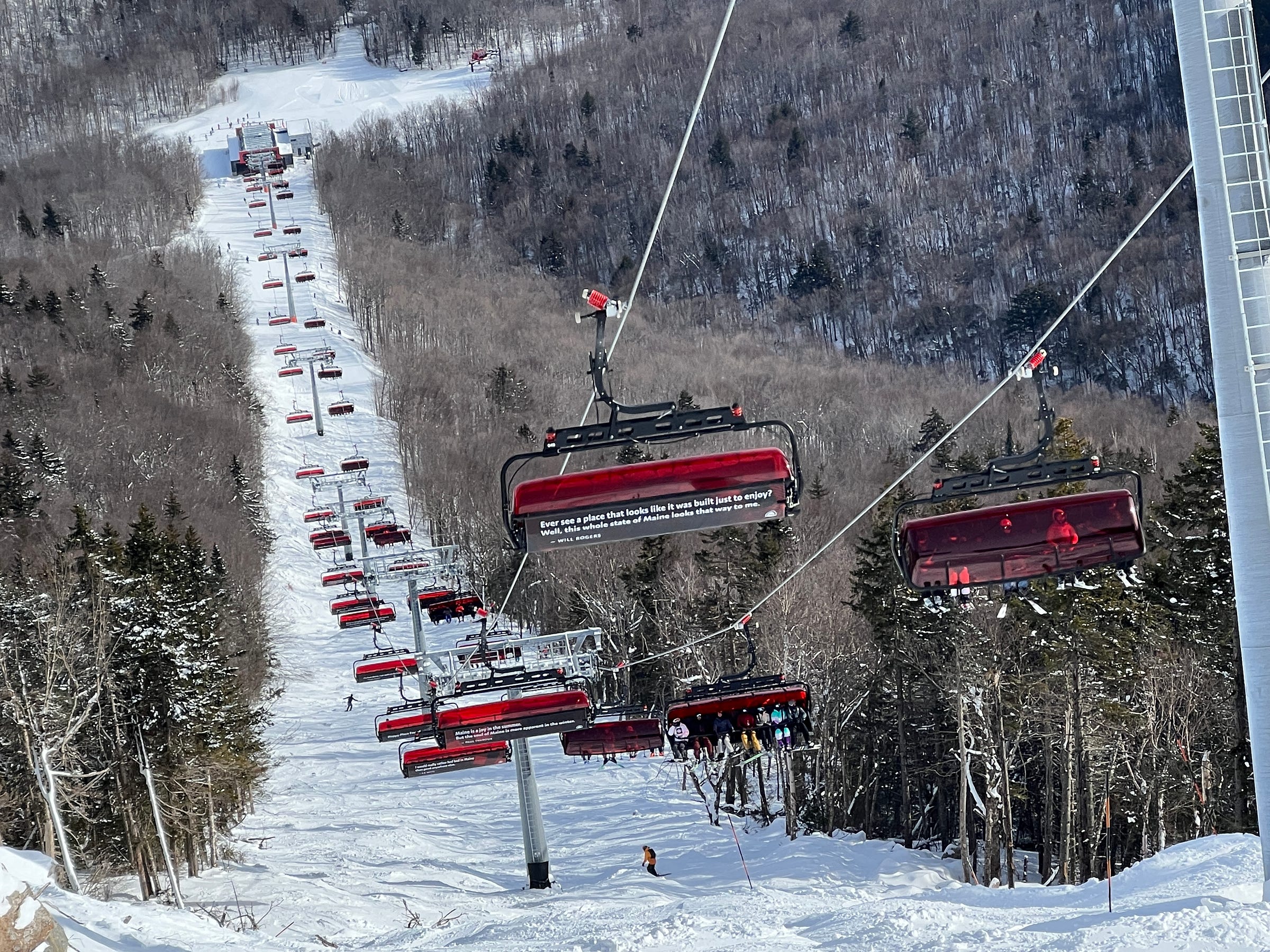
What we talked about
Rain, rain, go away; deciding to close down a ski resort; “seven inches of rain and 40-degree temperatures will eat snowpack pretty quick”; how Sunday River patched the resort back in only four days; the story behind the giant igloo at the base of Jordan; is this proof of climate change or proof of ski industry resilience?; one big advantage of resort consolidation; the crazy New England work ethic; going deep on the new Barker 6 lift; why Sunday River changed plans after announcing that the old Jordan high-speed quad would replace Barker; automatic restraint bars; the second Merrill Hill triple and why it won’t spin until the 2024-25 ski season; the best part about skiing Merrill Hill; how Jordan 8 has transformed Sunday River; why that lift is so wind-resistant; the mountain’s evolving season-opening plan; the potential Western Reserve expansion; potential future lift upgrades; carpet-bombing; 2030 progress beyond the on-snow ski experience; whether the summer bike park could return; the impact of the Ikon Pass on skier visits; Mountain Collective; the New England Pass; and making sure local kids can ski.
Why I thought that now was a good time for this interview
Jordan 8. Barker 6. Merrill Hill. A December rainstorm fit to raise Noah’s Ark. There is always something happening at Sunday River. Or, to frame it in the appropriate active voice: Sunday River is always doing things.
New England, in its ASC/Intrawest late 1980s/1990s/early 2000s frenzy, built and built and built. Sugarbush installed five lifts, including the two-mile-long Slide Brook Express, in a single summer (1995). Killington built two gondolas and two high-speed quads in a three-year span from 1994 to ’97. Stratton sprouted two six-packs and two fixed-grip quads in the summer of 2001. And Sunday River, the most earnest manifestation of Les Otten’s ego and ambitions, multiplied across the wilderness, a new peak each year it seemed, until a backwater with a skiable footprint roughly equal to modern Black Mountain, New Hampshire had sprawled into a videogame ski kingdom at the chest-thumping pinnacle of Northeast skiing.
And then not a lot happened for a really long time. ASC fell apart. Intrawest curdled. Most of the ski area infrastructure investment fled west. Stowe, then owned by AIG, kept building lifts, as did the Muellers (Okemo), and Peak Resorts (at least at Mount Snow and Crotched). One-offs would materialize as strange experiments, like the inexplicable six-pack at Ragged (2001) and the Mid-Burke Express at remote and little-known Burke Mountain (2011). But the region’s on-mountain ski infrastructure, so advanced in the 1990s, began to tire out.
Then, since 2018 or so, rapid change, propelled by numerous catalysts: the arrival of western megapasses, a Covid adrenaline boost, and, most crucially, two big companies willing to build big-time lifts at big-time ski areas. Vail, since kicking New England’s doors open in 2017, has built a half-dozen major lifts, including three six-packs, across four ski areas. And Boyne Resorts, flexing a blueprint they first deployed at western crown jewel Big Sky, has built three D-line bubble lifts, installed two refurbished high-speed quads (with another on the way this summer), unveiled two expansions, and teased at least two more across its four New England ski areas. It doesn’t hurt that, despite a tighter regulatory culture in general, there is little Forest Service bureaucracy to fuss with in the East, meaning that (Vermont’s Act 250 notwithstanding), it’s often easier to replace infrastructure.
Which takes us back to Sunday River. Big and bustling, secure in its Ikon Pass membership, “SR,” as the Boyne folks call it, didn’t really have to do anything to keep being busy and important. The old lifts would have kept on turning, even if rickety old Barker set the message boards on fire once every two to three weeks. Instead, the place is, through platinum-plated lifts and immense snowmaking upgrades, rapidly evolving into one of the country’s most sophisticated ski areas. If that sounds like hyperbole, try riding one of Boyne’s D-line bubble lifts. Quick and quiet, smooth as a shooting star, appointed like a high-end cigar lounge, these lifts inspire a sort of giddiness, an awe in the up-the-mountain ride that will reprogram the way you think about your ski day (even if you’re too cynical to admit it).
But it’s not just what Sunday River is building that defines the place – it is also how the girth of the operation, backed by a New England hardiness, has fortified it against the almost constant weather events that make Northeast ski area operation such a suicidal juggling act. The December rainstorm that tore the place into pieces ended up shutting down the mountain for all of four days. Then they were like, “What?” And the lifts were spinning again.
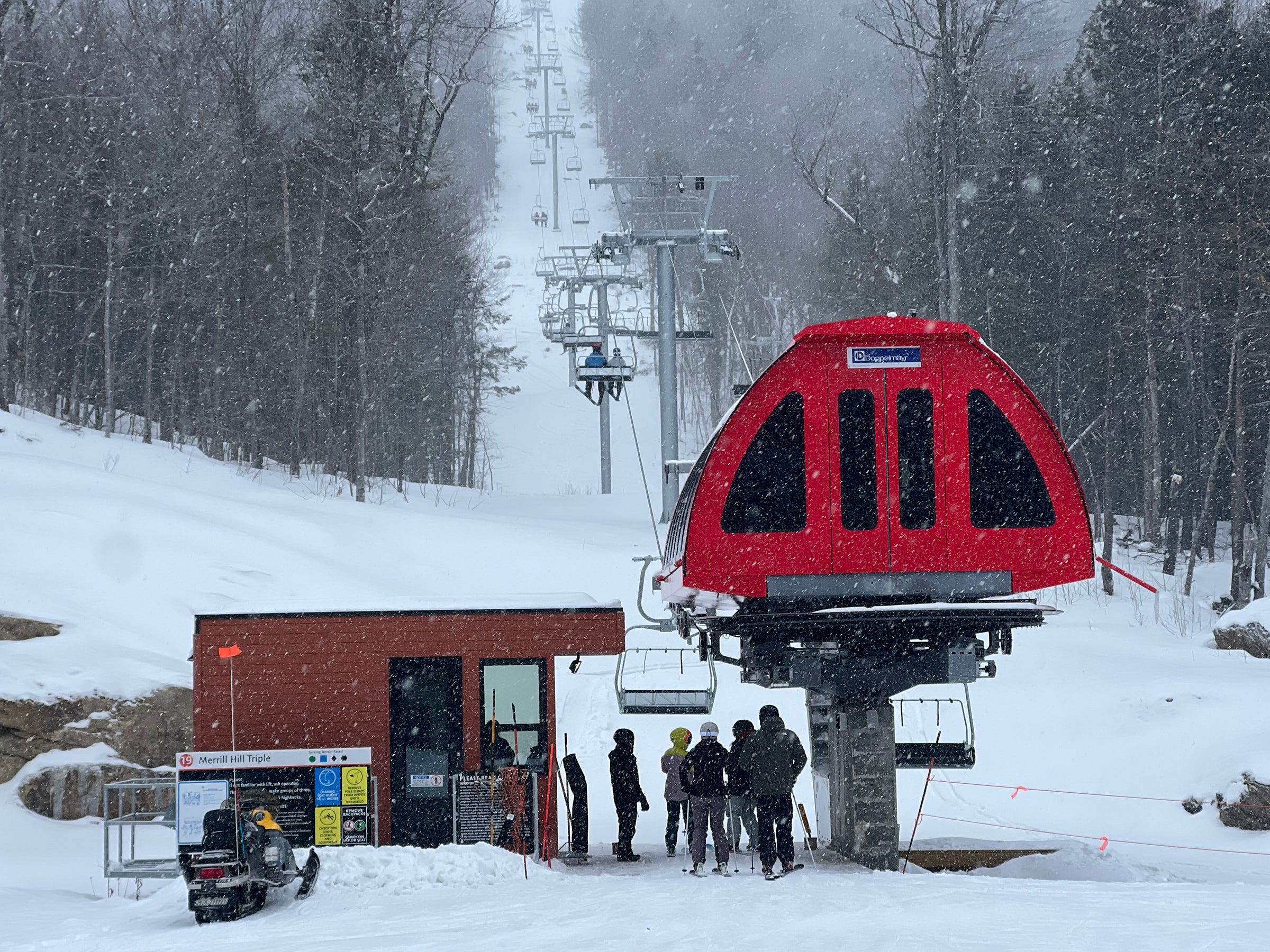
What I got wrong
On the old Jordan quad
Heon mentioned that the future of the old Jordan high-speed quad was “to be determined.” We recorded this in January, before Pleasant Mountain announced that they would use the bones of Jordan as their new summit lift, replacing a fixed-grip triple chair that was starting to get moldy.
On relative size
I said that Merrill Hill was Sunday River’s smallest peak by vertical drop. But the new Merrill Hill lift rises 750 vertical feet, while Little Whitecap sports a 602-foot vertical drop.
On the New England Pass
The prices I gave for New England Gold Passes ($1,350 early-bird, $1,619 final price), were for the 2023-24 ski season. Since then, 2024-25 passes debuted at $1,389 early-bird ($1,329 renewal), and currently sell for $1,439 ($1,389 renewal).
I also said that the New England Pass didn’t include Pleasant Mountain access. What I meant was that the pass only provides unlimited access to Sunday River, Sugarloaf, and Loon. But the full pass does in fact include three days at Pleasant Mountain, along with each of Boyne’s other six ski areas (Boyne Mountain, The Highlands, Big Sky, Brighton, Summit at Snoqualmie, and Cypress). Skiers can also add on a Pleasant Mountain night pass for $99 for the 2024-25 ski season.
We also refer to the Platinum New England Pass, which the company discontinued this year in favor of a kind-of build-your-own-pass structure – skiers can add an Ikon Base Pass onto the Gold Pass for $299 and the Pleasant Mountain night pass for $99.
Why you should ski Sunday River
The most interesting ski areas, to me, present themselves as an adventure. Wild romps up and over, each new lift opening a new set of trails, which tease yet another chairlift poking over the horizon. Little unexpected pockets carved out from the whole, places to disappear into, not like one ski area but like several, parallel but distinct, the journey seamless but slightly confusing.
This is the best way I can describe Sunday River. The trailmap doesn’t really capture the scale and complexity of it. It’s a good map, accurate enough, but it flattens the perspective and erases the drama, makes the mountain look easy. But almost the first thing that will happen at Sunday River is that you will get lost. The seven side-by-side peaks, so distinct on the map, blend into one another on the ground. Endless forests bisect your path. You can start on Locke and end, almost inexplicably, at the tucked-out-of-sight North Ridge quad. Or take off from the Barker summit and land at the junction of Aurora and the Jordan double, two lifts seemingly planted in raw wilderness that will transport you to two very different worlds. Or you can exit Jordan 8 and find yourself, several miles later, past a condo city and over a sequence of bridges, at the White Cap lodge, wondering where you are and how you got there.
It's bizarre and brilliant, like a fully immersive game of Mouse Trap, a wild machine to lose yourself in. While it’s smaller and shorter than Sugarloaf, its massive sister resort to the north, Sunday River, with its girth and its multiple base areas, can feel bigger, especially when the whole joint’s open. That also means that, if you’re not careful, you can spend all day traversing from one lift to the next, going across, rather than down, the fall lines. But ski with purpose and focus – and a map in your pocket – and Sunday River can deliver you one hell of a ski day.
Podcast Notes
On Sunday River 2030
Boyne is intentionally a little cagey on its 2030 plans, versions of which are in place for Loon, Sugarloaf, Summit at Snoqualmie, Boyne Mountain, The Highlands, and Sunday River. The exact content and commitments of the plans changes quite a bit, so I won’t try to outline them here. Elsewhere in the portfolio, Big Sky has a nearly-wrapped 2025 plan. Brighton, entirely on Forest Service land, has a masterplan (which I can’t find), but no 2030 commitment. Pleasant Mountain is still relatively new to the company. Cypress is in Canada, so who knows what’s going on up there. I’ll talk about that with the mountain’s GM, Matt Davies, in June.
On the December storm
Heon and I discuss the December rainstorm that brought up to seven inches of rain to Sunday River and nearby Bethel. That’s, like, an incredible amount of water:
Heon spoke to local reporters shortly after the resort re-opened.
On the Alpiniglu
Somehow, this party igloo that Sunday River flew a team of Euro-sculptors in to create survived the insane flooding.
On Hurricane Irene and self-sufficiency in Vermont
New England has a way of shrugging off catastrophic storm damage that is perhaps unequaled on planet Earth. From The New York Times, just a few months after Hurricane Irene blasted the state in 2011:
Yet what is truly impressive about the work here is not the amount of damage, or even the size of the big boy toys involved in the repair. Instead, it is that 107 is the last stretch of state road that Vermont has not finished repairing. In the three months since Hurricane Irene, the state repaired and reopened some 500 miles of damaged road, replaced a dozen bridges with temporary structures and repaired about 200 altogether.
Vermont’s success in repairing roads while keeping the state open for tourism is a story of bold action and high-tech innovation. The state closed many damaged highways to speed repairs and it teamed with Google to create frequently updated maps_ showing which routes were open. Vermont also worked in cooperation with other states, legions of contractors and local citizens.
While many Americans have come to wonder whether the nation has lost the ability to fix its ailing infrastructure or do big things, “they haven’t been to Vermont,” said Megan Smith, the state’s commissioner of tourism and marketing.
State roads, which are the routes used most by tourists, are ready for the economically crucial winter skiing season. But Vermont had many of those roads open in time for many of the fall foliage visitors, who pump $332 million into the state’s economy each year, largely through small businesses like bed and breakfasts, gift shops and syrup stands. Within a month of the storm, 84 of the 118 closed sections of state roads were reopened, and 28 of the 34 state highway bridges that had been closed were reopened. …
How did they get so much done so quickly? Within days after the storm hit on Aug. 28, the state had moved to emergency footing, drawing together agencies to coordinate the construction plans and permits instead of letting communications falter. National Guard units from eight states showed up, along with road crews from the Departments of Transportation from Maine and New Hampshire, and armies of private contractors. The attitude, said Sue Minter, Vermont’s deputy secretary of transportation, was, “We’ll do the work and we’ll figure out how we’re paying for it, but we’re not waiting.”
On Barker 6
When Sunday River announced that they would build the Jordan 8 chair in 2021, they planned to move the existing Jordan high-speed quad over to replace the POS Barker detach, a Yan relic from the late ‘80s. Eventually, they changed their minds and pivoted to a sixer for Barker. The old Jordan lift will now replace the summit triple at Pleasant Mountain next year.
On Kircher and redistribution
When Boyne Resorts CEO Stephen Kircher joined me on the podcast in November 2022, he explained the logic behind replacing the Jordan quad with an eight-pack, even though that wasn’t a traditionally super busy part of the resort (14:06):
On the expansions at Loon and Sugarloaf
Sunday River sister resorts Loon and Sugarloaf both opened expansions this ski season. Loon’s was a small beginner-focused pod, a 500-vertical-foot add-on served by a carpet-loaded fixed quad that mainly served to unite the resort with a set of massive parking lots on the mountain’s west end:

Sugarloaf’s West Mountain expansion was enormous – the largest in New England in decades. Pretty impressive for what was already the second-largest ski area in the East:
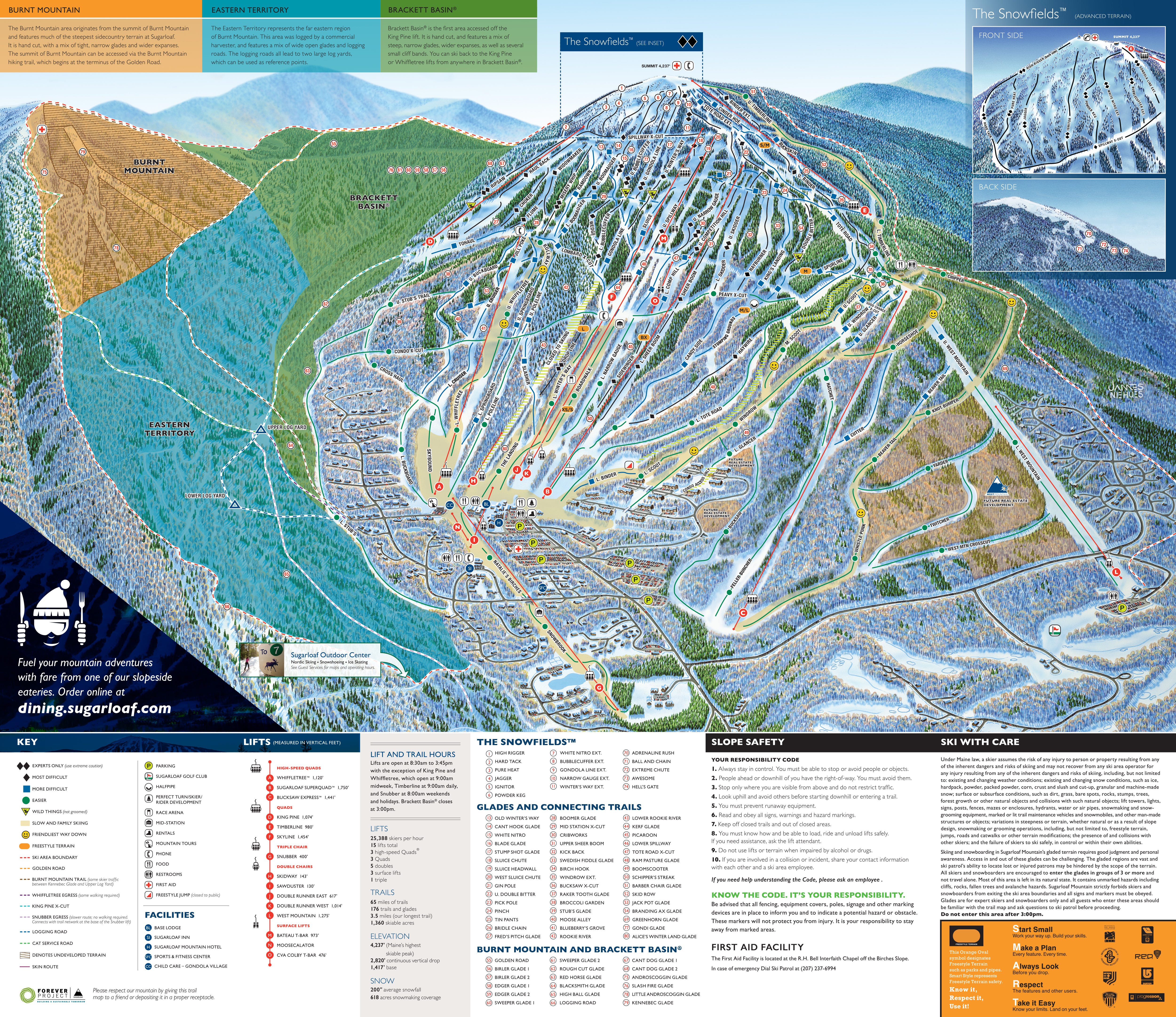
On the Mountain Collective in the Northeast
Here’s the Mountain Collective’s current roster:
Sunday River would make a lot of sense in there. While the coalition is mostly centered on the West, Stowe and Sugarbush are past members. Each mountain’s parent company (Vail and Alterra, respectively), eventually yanked them off the coalition, leaving Sugarloaf as the sole New England mountain (Bromont and La Massif de Charlevoix have since joined as eastern complements). I ask Heon on the podcast whether Sunday River has considered joining the collective.
On the Community Access Pass
We discuss Sunday River’s Community Access Pass, which is:
“a season pass scholarship for students that reside and attend school in the MSAD 17, SAD 44, and RSU 10 School Districts. Students grades Pre-K through 12 are eligible to apply. This pass will offer free daily access to the Sunday River slopes, and also comes with a complimentary membership to the Sunday River Ski and Snowboard Club. Students must meet certain economic qualifiers to apply; further details about the criteria are available on the pass application. Students have until November 15 to apply for the program.”
Apply here.
On Brian’s last appearance on the podcast
Heon last appeared on the podcast in January 2021:
Current Sunday River President Dana Bullen has also been on the pod, way back on episode 13:
On Merrill Hill and the new lift location
Here’s an approximate location of the new Merrill Hill lift, which is built but not yet operational, and not yet on Sunday River’s trailmap:
The Storm publishes year-round, and guarantees 100 articles per year. This is article 21/100 in 2024, and number 521 since launching on Oct. 13, 2019.






